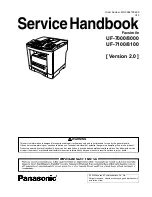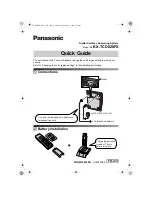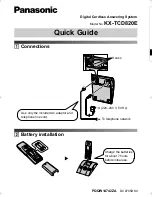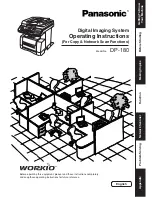
○○○○○○○○○○○○○○○○○○○○○○○○○○○○○○○○○○○○○○○○○○○○○○○○○○○○○○○○○○○○○○○○○○○○○○○○○○○○○○○○○○○○○○○○○○○○○○○○
40
CONTENTS
INDEX
MAINTENANCE
KNOWING YOUR
SEWING MACHINE
STRAIGHT AND
ZIGZAG STITCHING
BUILT-IN STITCHES
BUTTONHOLE AND
BUTTON SEWING
USING ATTACHMENTS
AND APPLICATIONS
1
Button Sewing
STITCH LENGTH
0
STITCH WIDTH
Set according to the distance between the
holes.
NEEDLE POSITION
L or R
PRESSER FOOT
Zigzag
NEEDLE
Single
OTHEr
Darning Plate
1. Set the darning plate on the needle plate over the feed dogs as
shown in the illustration and press down into place.
2. Place a button between the presser foot and the fabric.
3. You will need to adjust the stitch width to match the distance be-
tween the holes in the button. Turning the width knob will narrow
or widen the "swing" of the stitch to accommodate most buttons.
4. To check the width, move the balance wheel toward you while
observing the needle. Turn several times to make sure the needle
goes easily into the both holes on the button without touching the
button.
5. Slowly sew about 10 stitches.
6. Stop the machine and raise the needle from the fabric.
7. Remove the fabric from the machine and cut the upper and lower
threads leaving at least 10 cm (4"). With a normal sewing needle,
pull the threads to the back of the fabric and tie them together to
secure the button.
8. Remove the darning plate for normal sewing by pulling up on the
front edge.
1
Front edge slot on darning plate
Button Fitting with Thread Shank
The thread shank of a button is often needed when sewing on heavier
fabric.
1. Place a button between the presser foot and the fabric, adjust the
stitch width according to the distance between the holes in the
button and sew on the button as previously explained.
2. After sewing about 10 stitches, remove the fabric from the machine
leaving a longer upper thread (about 15 cm (6")) in order to form a
thread shank.
3. Pull the upper thread through one of the holes on the button until it
is between the button and the fabric and tightly wrap the thread
around the stitches.
4. With a normal sewing needle, pull the threads to the back of the
fabric and tie the ends together to secure the button.
Coudre un bouton
Longueur de point
0
Largeur de point
Selon la distance entre les orifices du bou-
ton.
Position de l’aiguille
L ou R
Pied-de-biche
Zigzag
Aiguille
Simple
Autre
Plaque à repriser
1. Mettre la plaque à repriser sur la plaque à aiguille sur les griffes
d’entraînement comme l’indique l’illustration et appuyer pour la
mettre en place correctement.
2. Placer un bouton entre le pied-de-biche et le tissu.
3. Il sera nécessaire de régler la largeur de point selon la distance
entre les orifices du bouton. En tournant le sélecteur de largeur, le
point deviendra plus ou moins large, ainsi il est possible de coudre
toutes sortes de boutons.
4. Pour vérifier la largeur, faire tourner le volant vers soi tout en ob-
servant l’aiguille. Le tourner plusieurs fois pour vérifier que l’aiguille
entre facilement dans les deux orifices sans heurter le bouton.
5. Faire 10 points lentement.
6. Arrêter la machine et sortir l’aiguille du tissu.
7. Retirer le tissu de la machine et couper les fils supérieur et inférieur
en laissant dépasser au moins10 cm. A l’aide d’une aiguille à cou-
dre normale, tirer les fils vers l’arrière du tissu et faire un noeud.
8. Retirer la plaque à repriser en tirant sur le bord avant pour recom-
mencer la couture normale.
1
Bord avant de la plaque à repriser
Mise en place d’un bouton à l’aide d’une queue de fil
Il est souvent nécessaire de faire une queue de fil lorsque le bouton est
cousu sur du tissu plus épais.
1. Placer un bouton entre le pied-de-biche et le tissu, régler la largeur
de point selon la distance entre les orifices du bouton et coudre le
bouton sur le tissu selon les explications précédentes.
2. Après environ 10 points, retirer le tissu de la machine en laissant
dépasser un fil supérieur long (environ 15 cm) afin de former une
queue de fil.
3. Tirer sur le fil supérieur pour le faire passer par un des orifices du
bouton jusqu’à ce qu’il se trouve entre le bouton et le tissu, puis
l’enrouler fermement autour des points.
4. A l’aide d’une aiguille à coudre normale, tirer les fils de l’autre côté
du tissu et les nouer pour éviter que le bouton ne se défasse.
















































